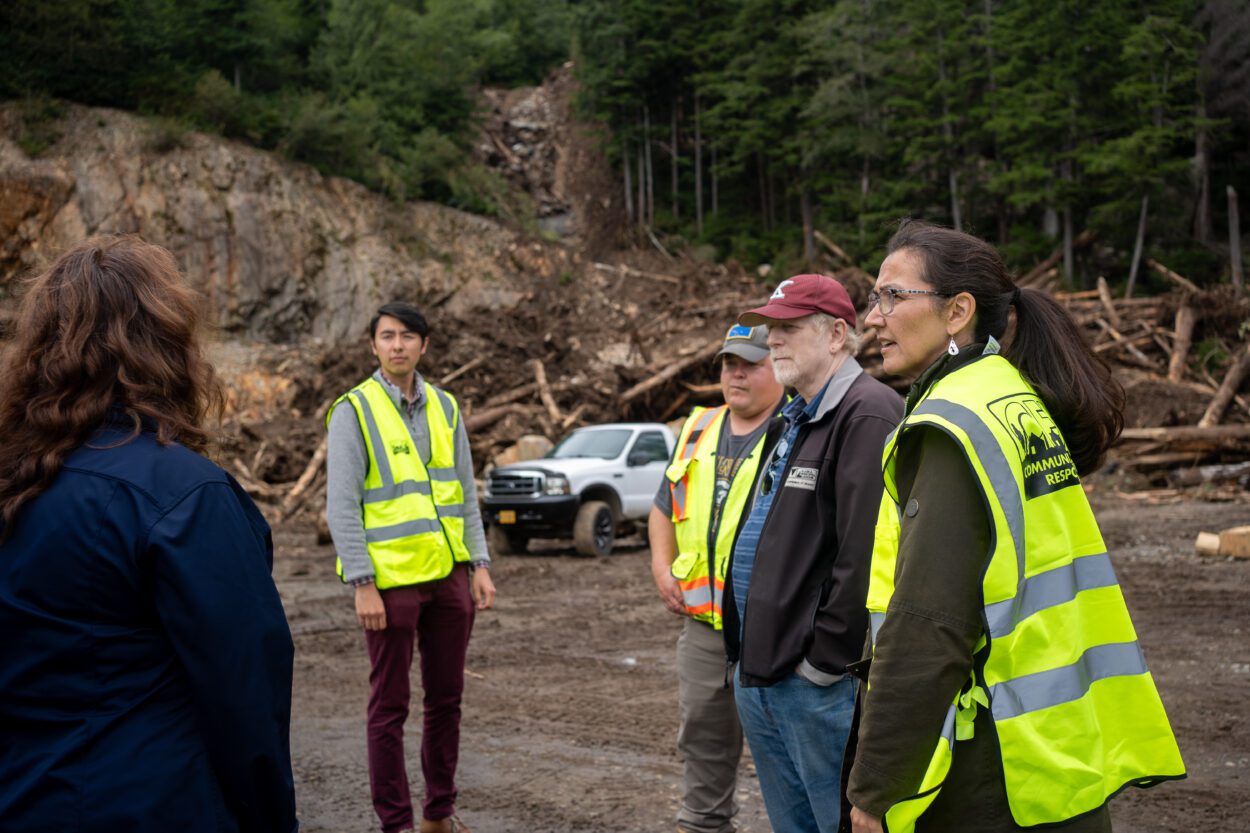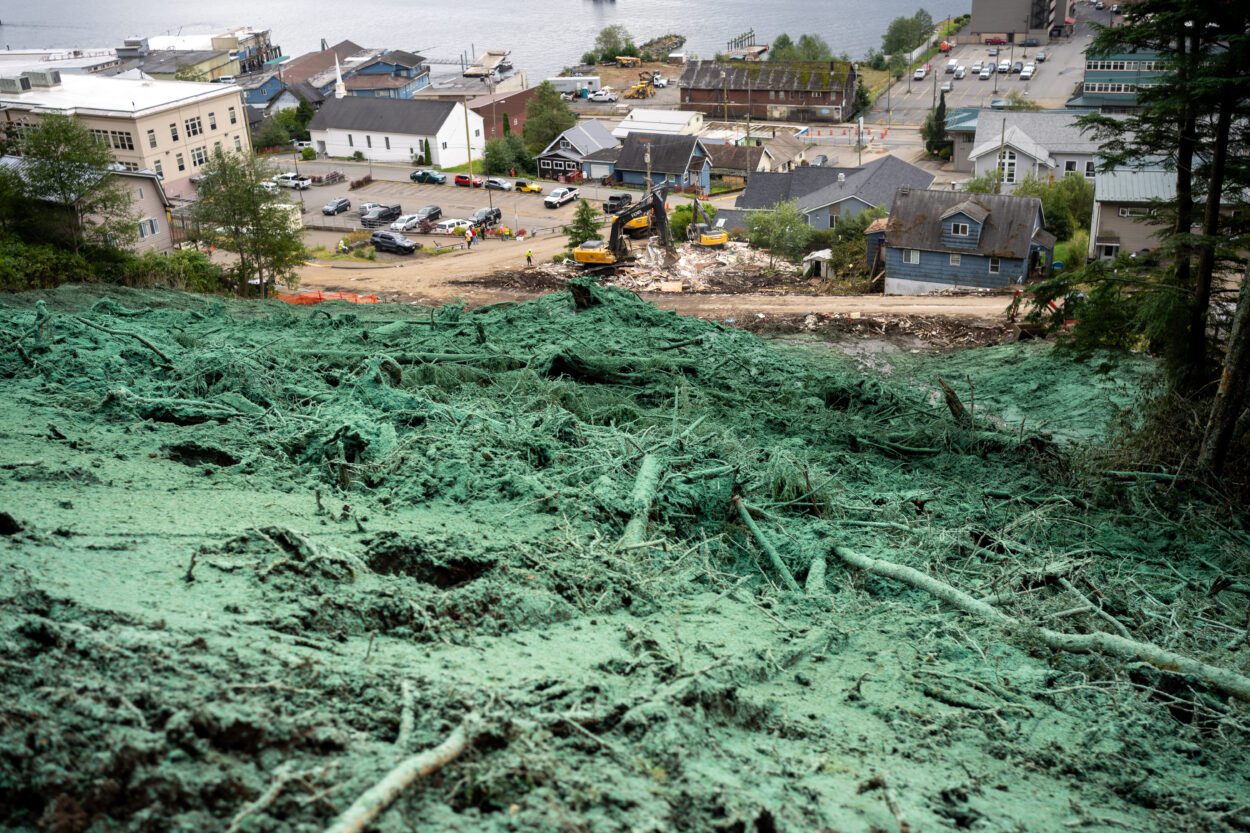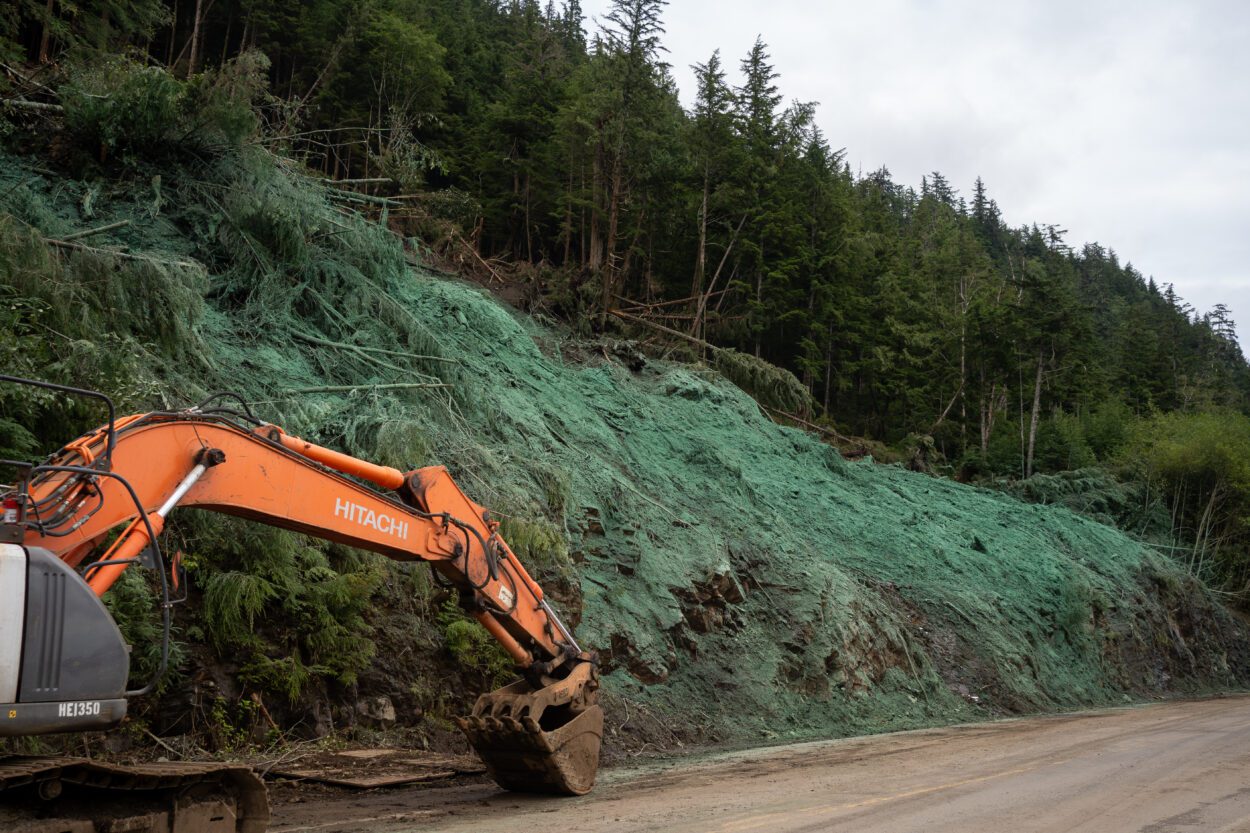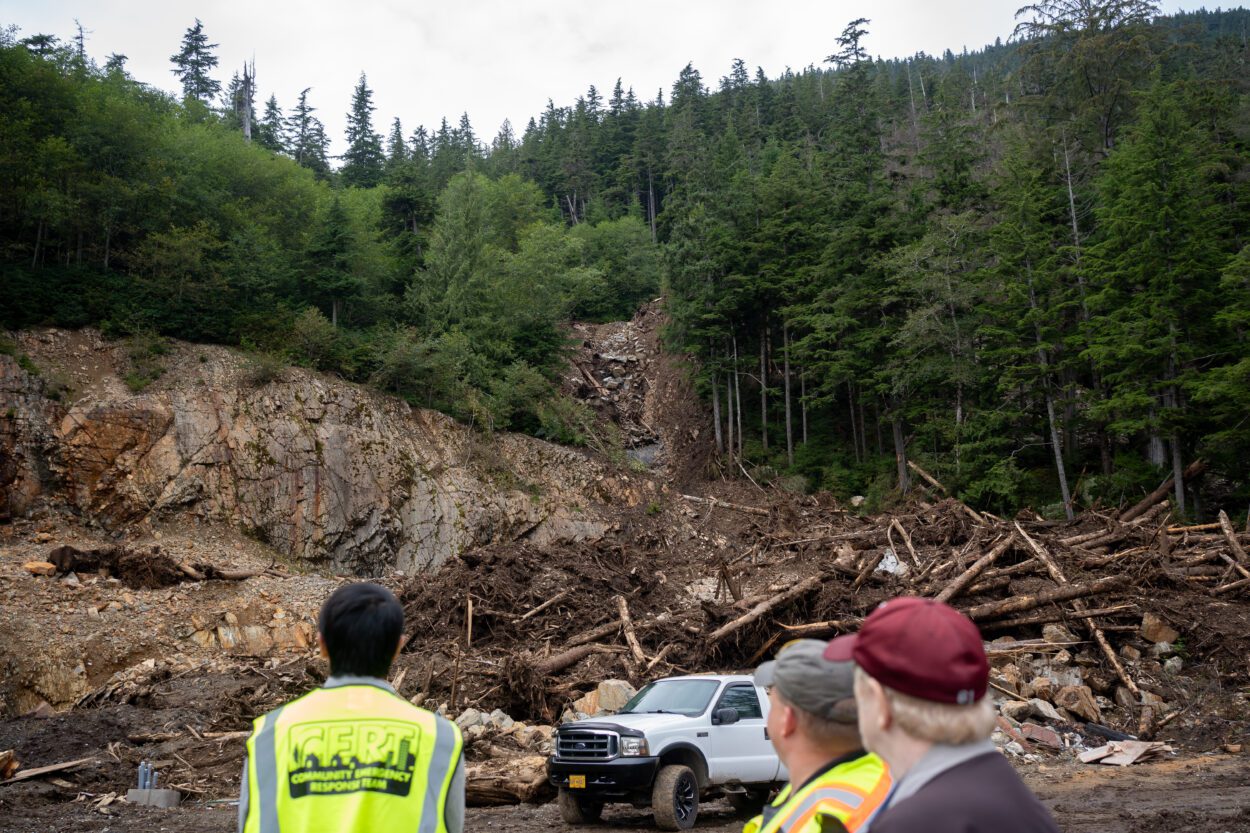
Alaska’s U.S. House Representative Mary Peltola visited Ketchikan over the weekend to meet with local officials following the deadly Aug. 25th landslide.
Peltola toured the Third Avenue Bypass. A week before, it was covered in multiple inches of dark mud. At that moment, though, the roadway was plastered in a bright green slurry.
The slurry was from crews hydroseeding the hillside, a process that involves spraying a mix of seed and fertilizer onto the exposed slide area to kickstart the growth of plant life to provide stabilization and prevent further sliding about the damaged neighborhood.
Below the Bypass, three houses were being demolished. Peltola watched crews combing through housing debris.
“They gingerly picked out a toolbox!” Peltola exclaimed.
The families who lost their houses in the slide provided crews with a list of valuable items to search for as they carted the remains of their homes to the city dump. According to City Manager Delilah Walsh, a few of the items on people’s lists had been recovered: a passport, an Algonquin tribal mask, the cremated remains of a victim’s loved one.

The slide killed one person, injured others, and displaced nearly an entire neighborhood of families. Many had been able to return to their homes but an evacuation order remained in effect for a handful of homes in the slide zone.
U.S. Lisa Murkowski made a similar tour last week. Murkowski asked a lot of questions about geological surveying. She recently introduced a bill to provide national funding for landslide preparedness. Peltola, though, seemed interested in capital projects and staffing.
City Manager Delilah Walsh said many in the community were worried about insurance, like victims whose providers wouldn’t pay out for the slide damages, as well as others who feared their premiums were about to skyrocket.
“FEMA should be ready for landslide insurance, just like they sponsor flood insurance,” Walsh said.
She also said that the biggest goal for the City and Borough at that moment was weather monitoring and putting systems in place to keep people safe.
“There are phases. It’s the weather net and then the modeling and then the warning systems,” Walsh told Peltola. “To be able to say: ‘This is how we do things.'”
The City Manager informed Peltola that this disaster had exacerbated the city’s staffing concerns. Outmigration is a problem across the state, Walsh admitted, but here in Ketchikan, understaffed crews are working around the clock.
“We’re trying to get engineering staff and professional staff and technical staff and line crews and water operators and wastewater operators,” she said. “We’re desperate.”
Walsh said that they’d been trying to ensure everyone got enough break time to do their jobs safely but there was a toll. Sean Griffin was clearing storm drains for the City Public Works Department when he was killed by the slide. Walsh said his coworkers were devastated but the work didn’t stop.
“The day it rained again, they had to come in and clear drains again,” Walsh remembered. “And I can’t even imagine the trauma, the psychological trauma, associated with that. Like, ‘This is how my friend died, and I’ve got to go do my job,’ and they did it willingly.”
Walsh and other city officials wanted to know what Peltola and the congressional delegation were doing on a federal policy level to get people into technical and trade programs to fill jobs like these. Peltola said outreach and education for youth on the value of trade jobs was a solution.
“We’re not only seeing people leave the state, but fewer people are moving here. A lot of it is the investment on the state side, and then, of course, the federal side,” Peltola said.
She also blamed a lack of housing, childcare options, and education funding in Ketchikan and across the state as part of the problem.
“We need to start framing these as a workforce development issue,” Peltola said.
Walsh added that on the housing front in Ketchikan, they were trying to do anything they could to get the local U.S. Coast Guard base to build more housing on the parcels of undeveloped land in their possession.
“Anything that we can do develop housing on the base is a huge benefit, because it relieves the inventory in the city,” Walsh said.
Peltola was also interested in how the city’s cruise industry affected the crisis response. Borough spokeswoman Kacie Paxton said that the cruise industry was relatively cooperative. Though, they would like to explore ways to better communicate with them in the future. In other words, if there is a natural disaster and eight cruise ships in town, how will the city communicate with all of those ships quickly to make sure they keep the tourists on the boat and out of the way of rescue crews?
Peltola commended the City and the Borough employees for their nonstop effort after this disaster and said she would talk to the people she could about these issues. She finished her visit by meeting privately with the victims of the landslide at the Ketchikan Public Library.







